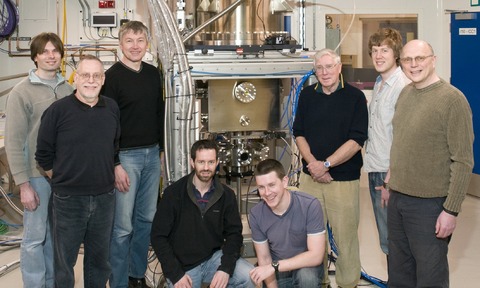
Expert team at Diamond Light Source runs first experiments on their new high field magnet from Oxford Instruments.
Oxford Instruments has recently installed a state-of-the-art 14 Tesla superconducting magnet system for ultra-high-vacuum experiments at Diamond Light Source, the UK’s national synchrotron facility.
The magnet system has been installed on the new I10 Beamline for Advanced Dichroism Experiments (BLADE) and has already been used by the first researchers to search for “hidden magnetic states”.
If found they will provide important confirmation of a theoretical model which would have important applications in magnetic data storage.
The new magnet system required several months to build and install due to the high level of integration with Diamond equipment and the innovative steps within the magnet and system design to meet the experimental needs.
To allow fast ramping of the magnetic field, the 14 Tesla, horizontal field split pair magnet was constructed using Oxford Instruments’ innovative low-hysteresis Nb3Sn superconducting wire, developed by Oxford Superconducting Technology (OST) as part of its contract to supply 58 tonnes of wire to the ITER project.
As a result, the magnet can be swept from -14 T to 14 T in less than an hour. Since the magnet has to operate in an ultra high vacuum (UHV) environment, directly connected to the Diamond beamline, its construction required the specific UHV cleaning and build processes and facilities which Oxford Instruments has developed over some years.
The system is fully UHV compatible and has been designed to be baked. A UHV Variable Temperature Insert (VTI) integrated with the system offers sample temperatures from 2 K to 420 K.
Finally, the magnet is contained in a cryostat which fully recondenses all of the liquid helium, using twin pulse tube refrigerators to re-liquefy the evaporating helium gas.
Because the magnet system is fitted with the latest high temperature superconducting (HTS) magnet current leads which minimise thermal input, the liquid helium continues to be recondensed even during magnet sweeping.

